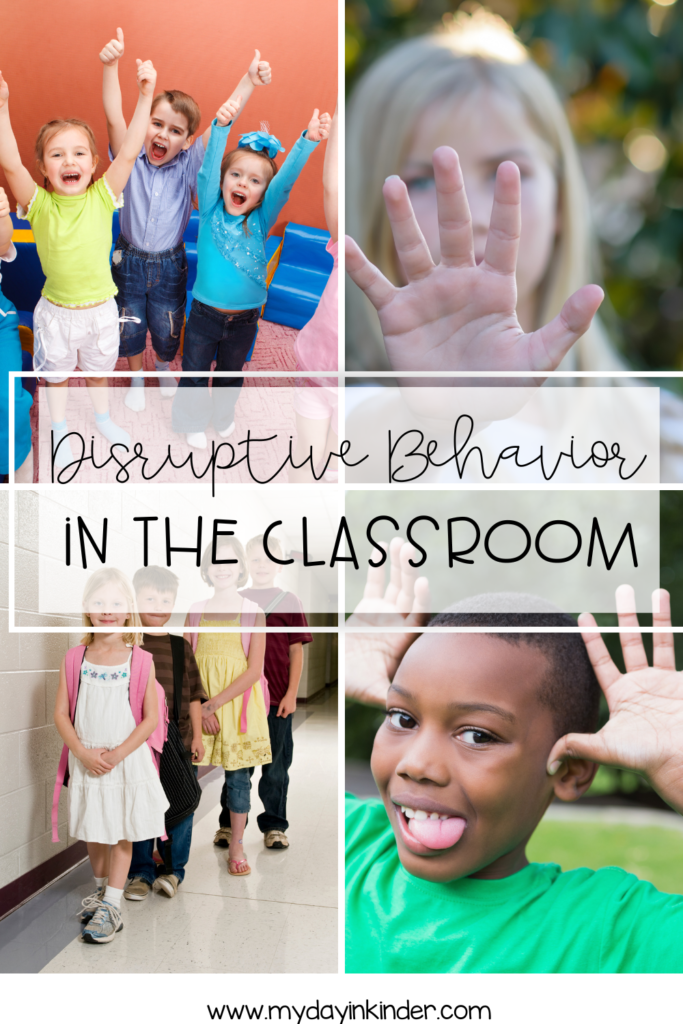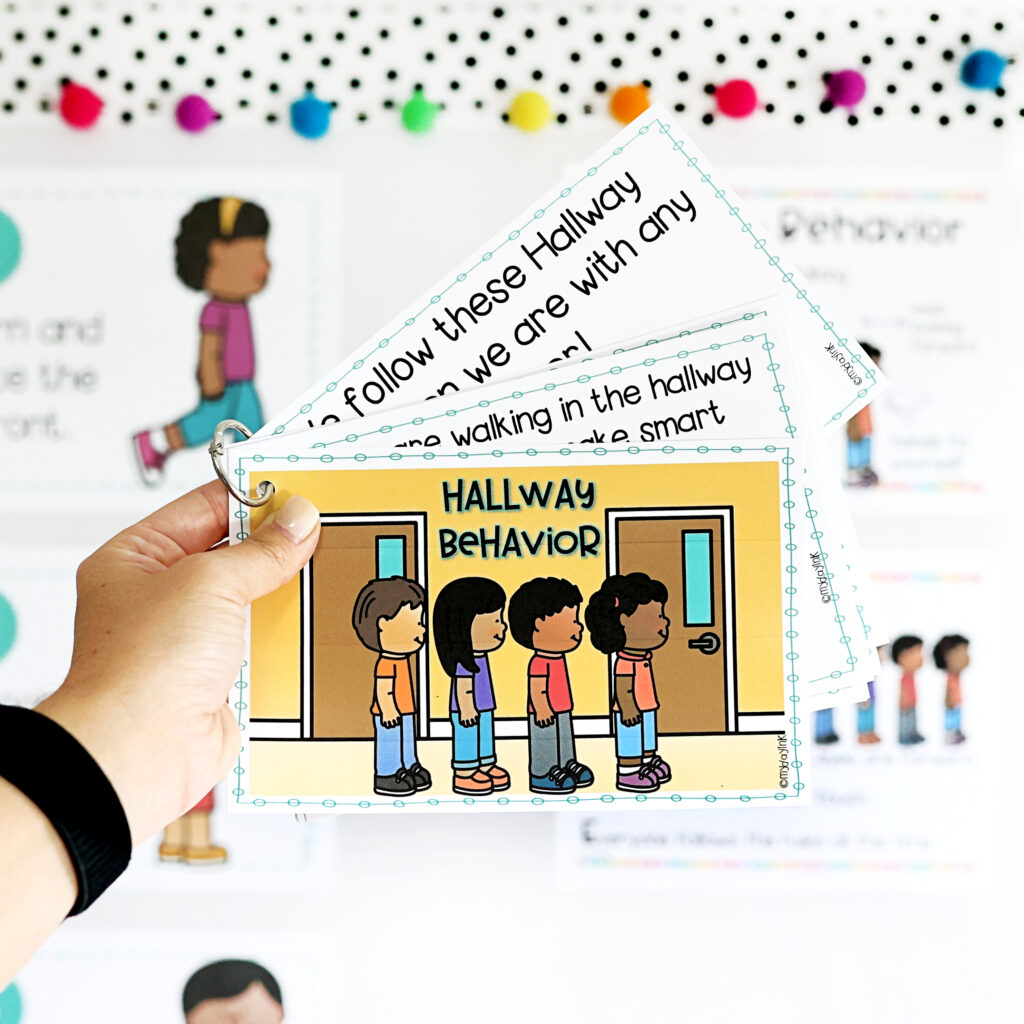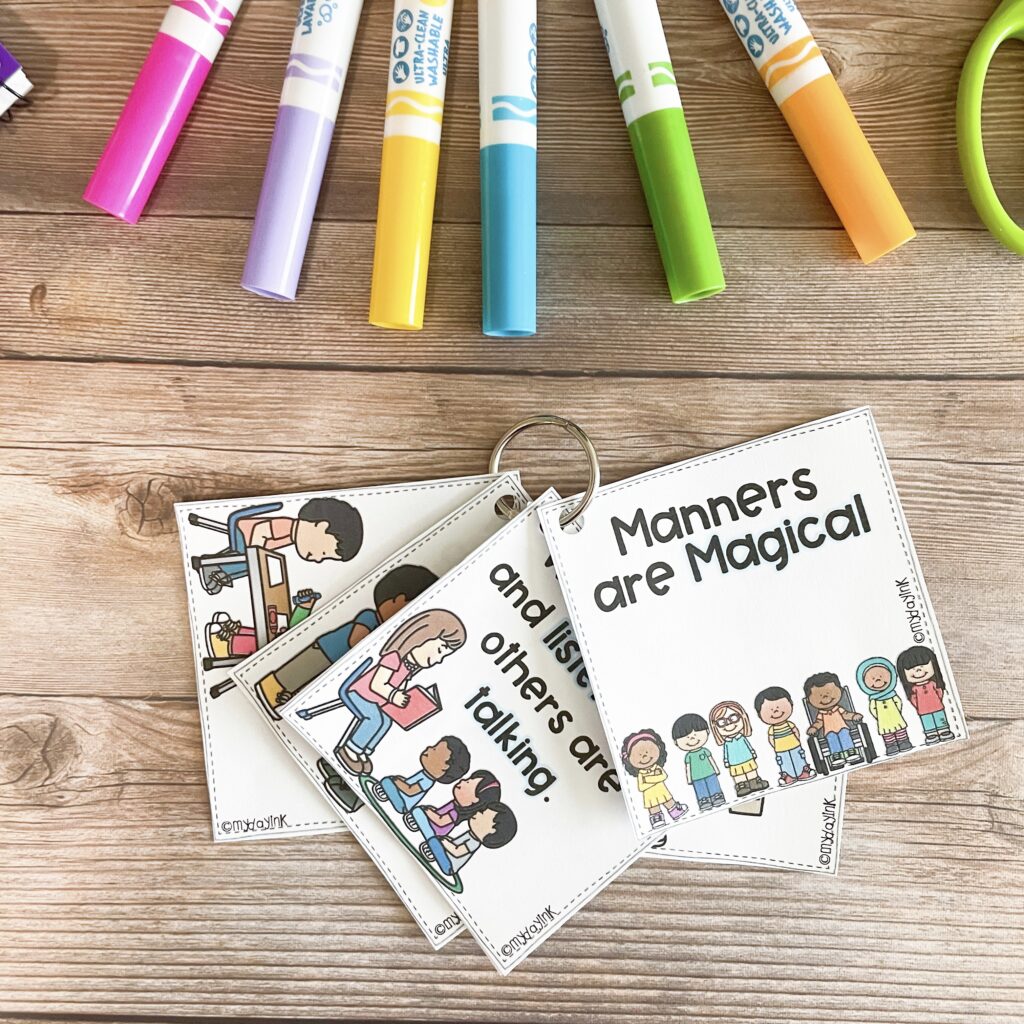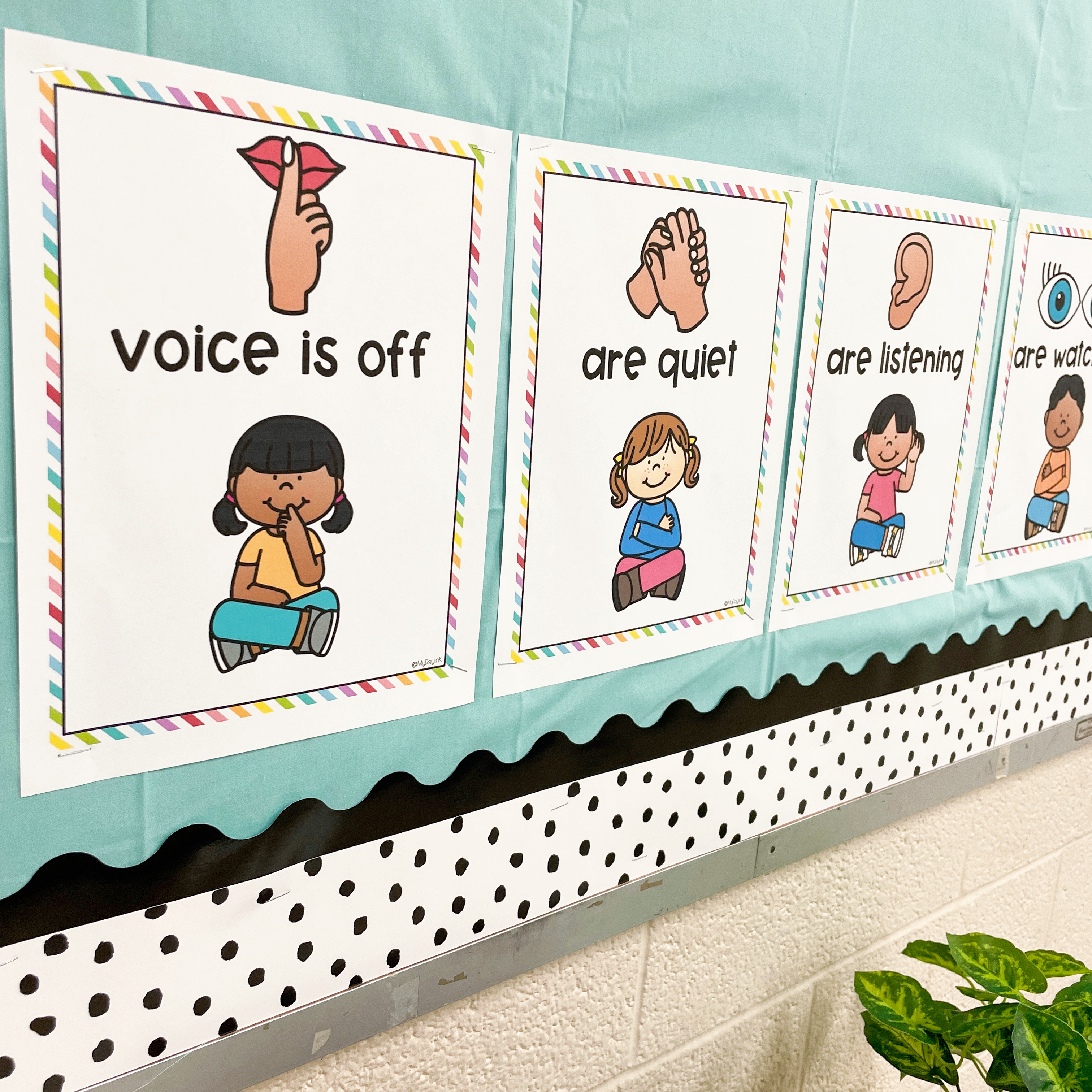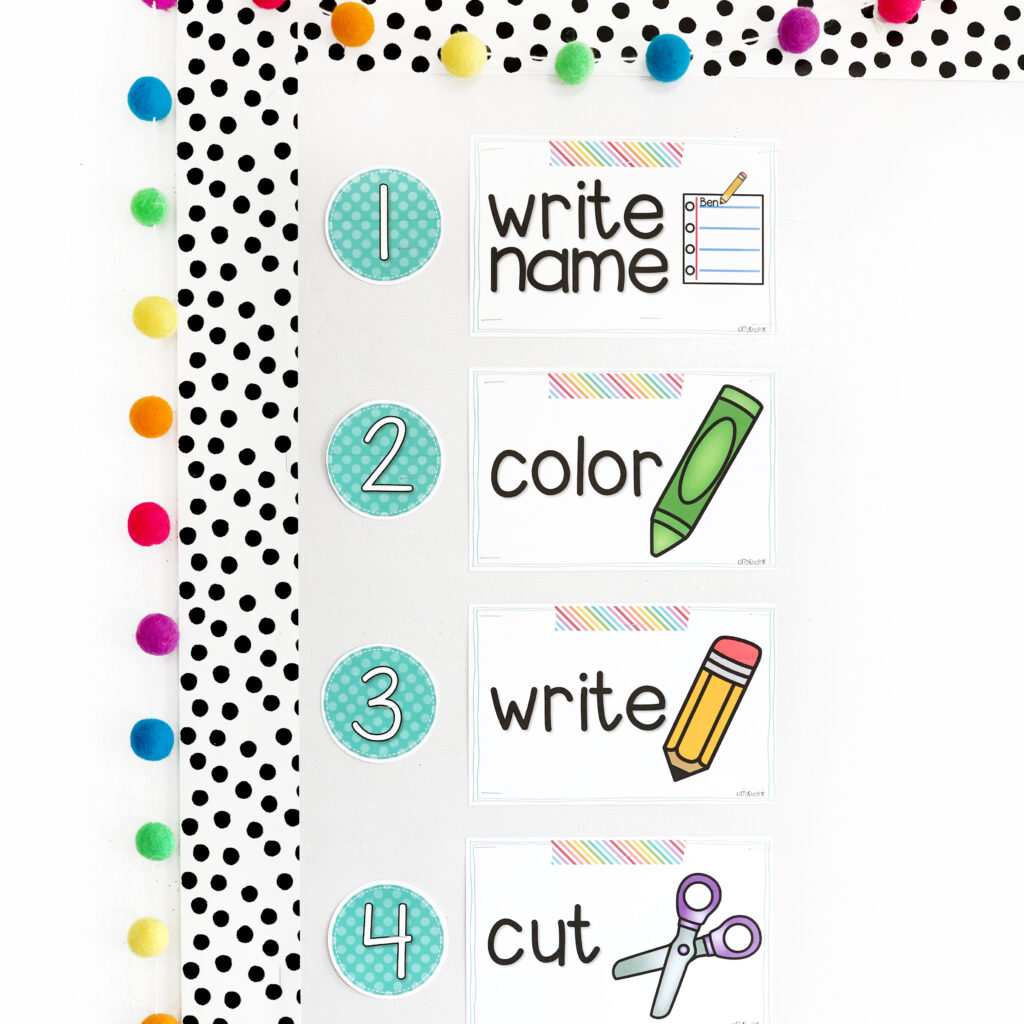Strategies for Disruptive Behavior in the Classroom
So, it’s the beginning of the year, and everything was supposed to go smoothly… until you met the disruptive students. Whether it’s the line jumper, the blurt master, or the infamous space invader, every class has its fair share of disruptive classroom behavior that threatens the classroom environment. Don’t worry, though; we’ve all been there. Instead of throwing your hands up in frustration, let’s look at some practical strategies for disruptive behavior in the classroom and create a more positive classroom culture.
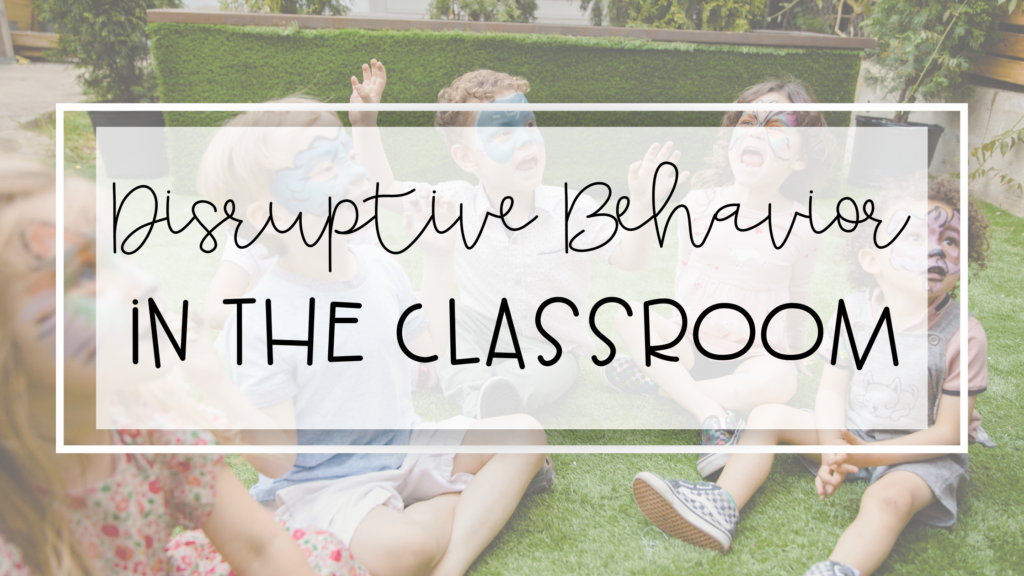
The Line Jumper
Ah, the line jumper—the student who just can’t seem to wait their turn. Whether they’re racing to the front of the line for recess or cutting ahead during dismissal, this can create tension among the entire class. While this might seem like a minor issue, it can cause a ripple effect, leading other students to think it’s okay to ignore clear rules.
The fix:
The first step here is setting clear expectations for how lining up should go. This means consistently reminding students of what good behavior looks like when waiting their turn. One effective method is having a visual line-up chart that lists each student’s spot. You can offer positive reinforcement for those who follow the rules with extra free time or a coveted classroom job. If the behavior persists, have a quiet conversation with the student, outlining how such behavior impacts others and what the consequences will be moving forward.
The Blurt Master
We all know this one. The blurt master can’t help but shout out answers, opinions, and questions in the middle of your lesson plan, completely derailing your thought process. While their enthusiasm is great, this ongoing disruptive behavior can interfere with other students’ focus and academic engagement.
The fix:
When it comes to strategies for disruptive behavior in the classroom, this fix is pretty easy. Start by reminding the class that raising hands and waiting to be called on is the best way to contribute. Use a redirection phrase like, “Remember, we raise our hands so everyone gets a turn to speak.” For the blurt master, try offering a positive reinforcement system, such as giving them a “blurt pass,” which they can trade for a special reward if they manage not to interrupt. You can also create clear rules for group discussions to make sure everyone knows when it’s their time to shine. Keep in mind that positive feedback goes a long way—acknowledge their excitement and eagerness while guiding them to more appropriate behavior.
The Space Invader
The space invader loves to get a little too close for comfort. They might not understand the concept of personal space, and they’re often up in their peers’ business during independent work time, causing classroom disruptions. For some students, this may stem from an inability to read social cues, which is a common cause of the incident.
The fix:
First, use gentle reminders about personal space and demonstrate what it looks like. Show the entire class how they can work together while respecting each other’s areas. A great tool is marking spaces with tape on the floor, showing where students should stand or sit. This visual boundary helps the space invader understand limits without making them feel singled out. If needed, practice positive social attention by praising the student when they give others enough space, reinforcing their progress in a positive manner.
The Antsy Pants
The antsy pants can’t sit still. They’re tapping, fidgeting, getting out of their seat, and causing constant minor disruptions during class time. Younger kids often have a tough time staying still for long periods, so it’s important to acknowledge this as a developmental challenge rather than outright defiance.
The fix:
This is where proactive approaches like brain breaks and physical activity come into play. Incorporating movement into your classroom management techniques is an effective way to keep students’ behavior in check. Try a quick game of Simon Says or a five-minute stretch session in the middle of a lesson. It gives kids the wiggles they need without compromising student learning. Also, set up a space in the room where the antsy pants can stand or use a wobble stool so they can move while still paying attention.
The Class Clown
Everyone loves a little humor, but the class clown takes it a bit too far. Whether they’re cracking jokes during a lesson or pulling pranks, they thrive on positive social attention—but in all the wrong moments.
The fix:
For the class clown, the goal is to redirect their need for attention into something positive. Assign them a role in class where they can shine, like being in charge of leading the morning meeting or giving them a moment to share something funny during free time. It’s important to acknowledge their contributions while setting firm boundaries about when humor is appropriate. Outline the behavioral expectations and make sure there are clear consequences if they disrupt the classroom setting during work time.
The Procrastinator
The procrastinator is the student who drags their feet, taking forever to start (or finish) any task. This behavior can throw off the flow of the school day and frustrate individual students trying to stay on task.
The fix:
Create a consistent routine and use a timer to help keep the entire class on track. Sometimes students who procrastinate need clear, step-by-step instructions and smaller, more manageable goals. Break down assignments into smaller chunks and give positive feedback when they complete each part. Celebrate their hard work to show them that getting things done feels good. Additionally, you can model what good time management looks like, showing them how to pace themselves during assignments.
Dealing with Ongoing Disruptions
When you’re dealing with ongoing disruptive behavior that interrupts learning, it’s essential to take a proactive approach. Strategies for disruptive behavior in the classroom, like setting up a behavior chart or having classroom discussions about positive behavior, can help. For more serious issues, consider using positive reinforcement strategies to encourage change. Create a space where students know that disruptive student behavior has behavioral implications, but where they also feel supported in making better choices.
Building positive relationships with disruptive students is one of the most effective ways to reduce unruly behavior. Students are more likely to engage in appropriate behavior when they feel respected and heard. So, the next time you’re about to pull your hair out because of a particularly challenging student, remember that behavior is a form of communication. By taking a positive manner and employing classroom management techniques, you’re setting the stage for a successful school year. After all, the best thing about teaching is that every day (and every behavior) gives you a chance to start fresh.
